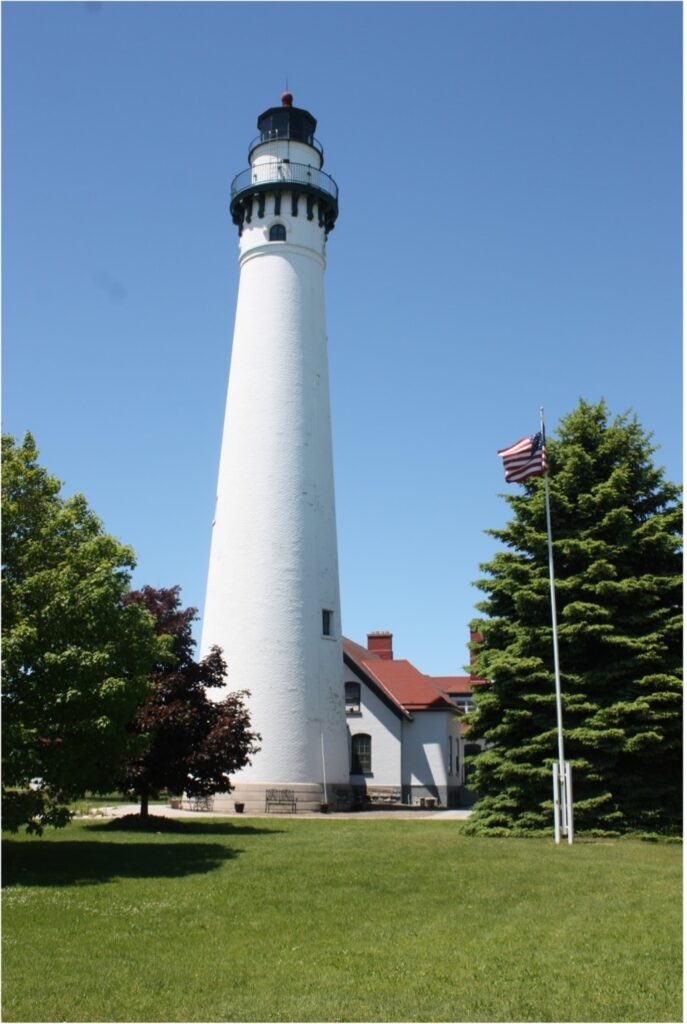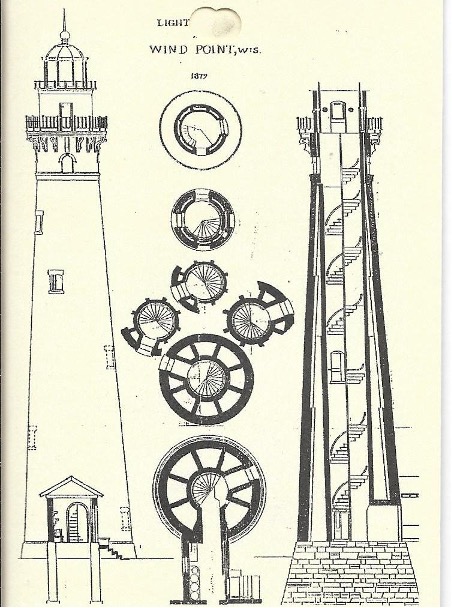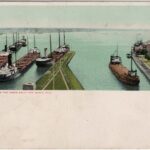
Wind Point Lighthouse is located in the Village of Wind Point, which sits just north of the Racine harbor on Lake Michigan. The lighthouse was constructed in 1880 and stands 108 feet high. In 1870 the U.S. Lighthouse Board, a federal agency responsible for the construction and maintenance of all lighthouses in America, petitioned for a lighthouse near Racine Point. That same year, Alexander Metcalfe Poe was appointed Chief Engineer of the Upper Great Lakes 11th Lighthouse District. This made Poe responsible for all lighthouse construction in the area. Poe’s decision to build Wind Point Lighthouse where it stands today was driven by the fact that Racine Point jutted out into Lake Michigan and obscured the existing Racine Port light. Concerns for the safety of ships sailing from the north made the new light necessary to help ships avoid the reef off Racine Point.
The Wind Point Lighthouse was built in a time when Wisconsin experienced a dramatic increase in waterway shipping. From the 18th to the early 20th century, there was considerable ship traffic on the western coast of Lake Michigan. The ships carried cargos ranging from lumber to wheat. Before the advent of railroads in the mid-1800s, water was the only cost-effective and efficient way to transfer goods and people from one place to another. After the great Chicago fire of 1871, the need for lumber to build housing in Chicago dramatically increased the traffic from northern Wisconsin. As this waterway accelerated in scale, the need for navigational aids such as the lighthouse became crucial. The consequences of a lack of robust navigation aids at the time are exemplified by the floor of Lake Michigan, which is littered with shipwrecks from Native American canoes to steel ships.
Construction of Wind Point followed Orlando Poe’s signature lighthouse design style which was named after him. The outer tower, made of a solid core of cream-colored bricks, was built on a limestone shelf that sat 15 feet below ground and protruded three feet above. On this foundation, an inner and outer tower of bricks was built to hold the lighthouse mechanisms. The towers consist of two cylinders, one inside the other. The outer tower was built with the bottom much larger in diameter than the top which gave it a more stability. Brick corbels, a masonry technique that creates a shelf or ledge, lined the top of the outer tower and allowed for a platform larger in diameter than the top of the tower which could hold and support larger and heavier lenses. Poe engineered towers that were taller yet sturdy enough to withstand the inevitable storms.
The inner tower, constructed in the shape of a straight cylinder—the same diameter at both ends, supported a wrought iron spiral staircase. Inside, a glass structure called a Fresnel lens was used to direct light from an oil lamp into a concentrated beam which could be seen at a much greater distance than the lamp itself. A clock mechanism rotated the lens to show a repeated pattern that could be used by ships to navigate safely to shore. The clock mechanism was powered by a weight hanging inside the outer tower. The repeated pattern was unique and distinguished one light from another. Wind Point had two of these lights which were used for triangulation to avoid the reef—one in the tower window pointed at the reef and the other located further south along Racine Harbor. Caretakers removed the one pointing at the reef from the lighthouse when a tower was built over the reef in the 1920s. This light continued to be used to triangulate a ship’s position when approaching Racine Harbor.
As of 2022, the Wind Point Lighthouse was still being maintained by the U.S. Coast Guard and served as a navigation aide to help boats avoid the Racine Point Reef and guide them into Racine Harbor. For over 150 years, Wind Point Lighthouse has both facilitated and represented the importance of maritime travel and shipping to Wisconsin’s history.
Written by Cheryl Kaufenberg, May 2023.




